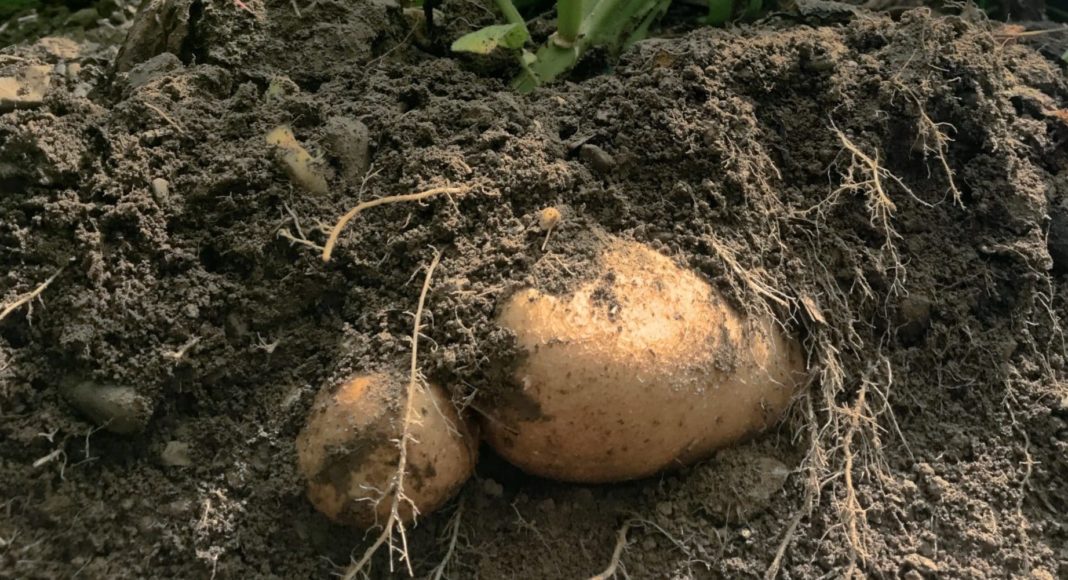When growers apply Strike soil fumigant under their carefully managed field conditions, they get impressive results — top-notch control of rhizoctonia, black dot, common scab, and even early die complex; increased populations of soil’s key microbials; boosted crop yield; improved sustainability. However, in less well-managed applications, results can leave a grower wanting. That’s because even a well-proven product like Strike is only at its best performance when it is set up for success. To get the most from your Strike fumigation, attention to detail both during and after application is critical. Last month, we talked about the importance of managing application correctly. This month, let’s dig into how to manage fumigated fields after application.
One of the most common misconceptions about fumigating with Strike is the treatment zone. Farmers regularly misinterpret fumigation as treating every square inch of soil, even incorrectly thinking it ‘sterilizes’ a field. While Strike targets soil borne disease, it only treats the row to a depth that protects the potato crop roots and daughter tubers. Given that spacing between fumigation (i.e. planting) rows is typically 36 inches and the fumigant is placed 10-12” below the soil surface, the vast majority of a field’s soil remains untreated. The key to Strike’s success is that treated and untreated soil don’t mix, as mixing contaminates the treated zone, reducing or negating Strike’s protective capacity. However, the whole field can be treated over time by offsetting planting rows.
Keeping a fumigant zone intact is key and depends an enormous amount on ensuring your hills hold up from fumigant application through planting and into the growing season. If you fumigate in the spring, that’s a relatively easy ask of your hills. However, if you fumigate in the fall, your hills need protection to withstand the erosive pressures of winter’s wind and snow and spring’s melt. The best solution to support hills’ integrity is cover crops.
Spring bed freshening isn’t generally necessary unless a really solid soil crust forms. If you choose to freshen, stay away from aggressive equipment like power hillers that mix and disturb the treated area. A better option is to rehill in-season. First, leaving the hills entirely undisturbed pre-planting means seedling plants get their best start in well-treated soil. And, though in-season rehilling will bring up soil onto the top of the hill, it can be done carefully enough to keep the fumigated zone mostly undisturbed.
Accurate seed placement is critical! Your goal is to disturb the hill as little as possible in order to maintain the treatment zone, while placing the seed as close as possible to the center of that treated area. If at all possible, use a system that offers GPS correction on the tractor at both fumigation and planting.
A farmer’s greatest tool is knowledge. The more you know, the more you can make a plan for success.
Related Articles
Are You Throwing Money Away on Your Soil Fumigation?
What Patates Dolbec Learned About Soil Fumigation Could Make You Money








